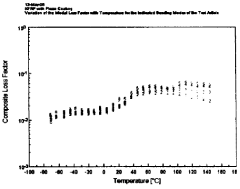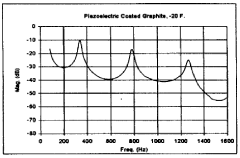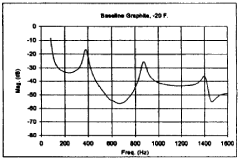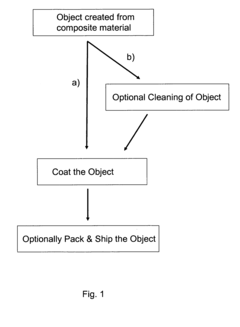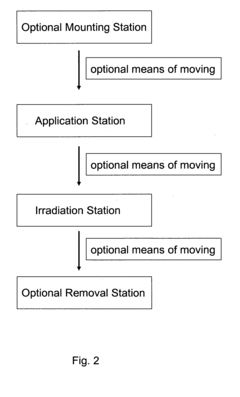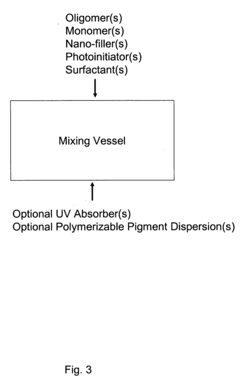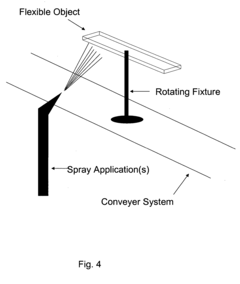How to Use Kevlar in High-Impact Floor Surfaces?
JUL 10, 20259 MIN READ
Generate Your Research Report Instantly with AI Agent
Patsnap Eureka helps you evaluate technical feasibility & market potential.
Kevlar in Flooring: Background and Objectives
Kevlar, a high-strength synthetic fiber developed by DuPont in the 1960s, has revolutionized various industries due to its exceptional properties. Initially designed for use in tires, Kevlar's applications have expanded significantly over the years, including its potential use in high-impact floor surfaces. This technical exploration aims to investigate the feasibility and advantages of incorporating Kevlar into flooring materials to enhance durability, impact resistance, and overall performance.
The evolution of flooring technology has been driven by the need for materials that can withstand heavy foot traffic, impacts, and various environmental stressors. Traditional flooring materials such as concrete, wood, and vinyl have limitations in terms of durability and impact resistance, especially in high-traffic areas or industrial settings. The introduction of Kevlar into flooring solutions presents an opportunity to address these challenges and potentially revolutionize the flooring industry.
Kevlar's unique properties make it an ideal candidate for high-impact floor surfaces. Its high tensile strength-to-weight ratio, excellent dimensional stability, and resistance to cuts and tears offer significant advantages over conventional flooring materials. By incorporating Kevlar fibers or composites into flooring systems, it may be possible to create surfaces that are not only more durable but also lighter and potentially more cost-effective in the long term.
The primary objective of this technical exploration is to assess the viability of using Kevlar in high-impact floor surfaces and to identify potential applications across various sectors. This includes evaluating the technical feasibility of integrating Kevlar into existing flooring materials, exploring new composite formulations, and analyzing the performance benefits in terms of impact resistance, wear resistance, and longevity.
Furthermore, this investigation aims to understand the challenges associated with Kevlar implementation in flooring, such as manufacturing processes, cost considerations, and potential limitations. By examining these factors, we can develop a comprehensive understanding of the opportunities and obstacles in leveraging Kevlar technology for advanced flooring solutions.
As we delve into this technical exploration, we will consider the broader implications of Kevlar-enhanced flooring, including its potential to reduce maintenance costs, improve safety in high-risk environments, and contribute to sustainable building practices through increased durability and reduced material replacement frequency. This analysis will provide valuable insights for future research and development efforts in the flooring industry, potentially paving the way for innovative, high-performance flooring solutions that meet the evolving demands of various sectors.
The evolution of flooring technology has been driven by the need for materials that can withstand heavy foot traffic, impacts, and various environmental stressors. Traditional flooring materials such as concrete, wood, and vinyl have limitations in terms of durability and impact resistance, especially in high-traffic areas or industrial settings. The introduction of Kevlar into flooring solutions presents an opportunity to address these challenges and potentially revolutionize the flooring industry.
Kevlar's unique properties make it an ideal candidate for high-impact floor surfaces. Its high tensile strength-to-weight ratio, excellent dimensional stability, and resistance to cuts and tears offer significant advantages over conventional flooring materials. By incorporating Kevlar fibers or composites into flooring systems, it may be possible to create surfaces that are not only more durable but also lighter and potentially more cost-effective in the long term.
The primary objective of this technical exploration is to assess the viability of using Kevlar in high-impact floor surfaces and to identify potential applications across various sectors. This includes evaluating the technical feasibility of integrating Kevlar into existing flooring materials, exploring new composite formulations, and analyzing the performance benefits in terms of impact resistance, wear resistance, and longevity.
Furthermore, this investigation aims to understand the challenges associated with Kevlar implementation in flooring, such as manufacturing processes, cost considerations, and potential limitations. By examining these factors, we can develop a comprehensive understanding of the opportunities and obstacles in leveraging Kevlar technology for advanced flooring solutions.
As we delve into this technical exploration, we will consider the broader implications of Kevlar-enhanced flooring, including its potential to reduce maintenance costs, improve safety in high-risk environments, and contribute to sustainable building practices through increased durability and reduced material replacement frequency. This analysis will provide valuable insights for future research and development efforts in the flooring industry, potentially paving the way for innovative, high-performance flooring solutions that meet the evolving demands of various sectors.
Market Analysis for High-Impact Flooring Solutions
The high-impact flooring solutions market has been experiencing significant growth in recent years, driven by increasing demand for durable and resilient flooring options across various industries. This market segment encompasses a wide range of applications, including industrial facilities, sports venues, commercial spaces, and high-traffic public areas. The incorporation of advanced materials like Kevlar in floor surfaces represents a cutting-edge development in this sector, offering enhanced performance characteristics and longevity.
Market research indicates that the global high-impact flooring market is projected to expand at a compound annual growth rate (CAGR) of 6.5% from 2021 to 2026. This growth is primarily attributed to the rising need for robust flooring solutions in manufacturing plants, warehouses, and logistics centers, where heavy machinery and frequent foot traffic pose significant challenges to traditional flooring materials. Additionally, the sports and recreation sector has emerged as a key driver for high-impact flooring, with increasing investments in sports facilities and fitness centers worldwide.
The industrial sector remains the largest end-user segment for high-impact flooring solutions, accounting for approximately 40% of the market share. This dominance is expected to continue due to the ongoing industrialization in emerging economies and the refurbishment of existing facilities in developed nations. The commercial sector, including retail spaces, airports, and healthcare facilities, represents the second-largest market segment, with a growing emphasis on safety and durability in high-traffic areas.
Geographically, North America and Europe currently lead the high-impact flooring market, owing to stringent safety regulations and a well-established industrial base. However, the Asia-Pacific region is anticipated to witness the fastest growth rate in the coming years, fueled by rapid industrialization, urbanization, and infrastructure development in countries like China and India.
The integration of Kevlar in high-impact floor surfaces presents a significant opportunity for market expansion. Kevlar, known for its exceptional strength-to-weight ratio and impact resistance, can potentially revolutionize the flooring industry by offering superior durability and performance compared to traditional materials. This innovation is likely to attract attention from sectors requiring extreme durability, such as manufacturing, aerospace, and defense industries.
Consumer trends indicate a growing preference for sustainable and eco-friendly flooring options. This shift presents both a challenge and an opportunity for Kevlar-based flooring solutions, as manufacturers will need to address environmental concerns while highlighting the long-term sustainability benefits of using highly durable materials that require less frequent replacement.
Market research indicates that the global high-impact flooring market is projected to expand at a compound annual growth rate (CAGR) of 6.5% from 2021 to 2026. This growth is primarily attributed to the rising need for robust flooring solutions in manufacturing plants, warehouses, and logistics centers, where heavy machinery and frequent foot traffic pose significant challenges to traditional flooring materials. Additionally, the sports and recreation sector has emerged as a key driver for high-impact flooring, with increasing investments in sports facilities and fitness centers worldwide.
The industrial sector remains the largest end-user segment for high-impact flooring solutions, accounting for approximately 40% of the market share. This dominance is expected to continue due to the ongoing industrialization in emerging economies and the refurbishment of existing facilities in developed nations. The commercial sector, including retail spaces, airports, and healthcare facilities, represents the second-largest market segment, with a growing emphasis on safety and durability in high-traffic areas.
Geographically, North America and Europe currently lead the high-impact flooring market, owing to stringent safety regulations and a well-established industrial base. However, the Asia-Pacific region is anticipated to witness the fastest growth rate in the coming years, fueled by rapid industrialization, urbanization, and infrastructure development in countries like China and India.
The integration of Kevlar in high-impact floor surfaces presents a significant opportunity for market expansion. Kevlar, known for its exceptional strength-to-weight ratio and impact resistance, can potentially revolutionize the flooring industry by offering superior durability and performance compared to traditional materials. This innovation is likely to attract attention from sectors requiring extreme durability, such as manufacturing, aerospace, and defense industries.
Consumer trends indicate a growing preference for sustainable and eco-friendly flooring options. This shift presents both a challenge and an opportunity for Kevlar-based flooring solutions, as manufacturers will need to address environmental concerns while highlighting the long-term sustainability benefits of using highly durable materials that require less frequent replacement.
Current Challenges in Kevlar-Based Floor Surfaces
The integration of Kevlar into high-impact floor surfaces presents several significant challenges that researchers and manufacturers are currently grappling with. One of the primary obstacles is achieving optimal adhesion between Kevlar fibers and the matrix material. The inherent chemical structure of Kevlar, which contributes to its exceptional strength, also makes it difficult to bond effectively with other materials. This poor interfacial adhesion can lead to delamination and reduced overall performance of the floor surface under high-impact conditions.
Another major challenge lies in the uniform distribution of Kevlar fibers within the floor surface matrix. Ensuring an even dispersion of fibers is crucial for maintaining consistent mechanical properties across the entire surface area. However, the tendency of Kevlar fibers to agglomerate during the manufacturing process can result in weak spots and inconsistent performance, potentially compromising the floor's ability to withstand high-impact forces.
The cost-effectiveness of incorporating Kevlar into floor surfaces remains a significant hurdle. While Kevlar offers superior strength-to-weight ratio and impact resistance, its high production costs can make large-scale implementation economically challenging. Balancing the enhanced performance benefits with the increased manufacturing expenses is a key consideration for widespread adoption in commercial and industrial flooring applications.
Durability under diverse environmental conditions poses another challenge. High-impact floor surfaces are often exposed to varying temperatures, humidity levels, and chemical agents. Ensuring that Kevlar-based floors maintain their structural integrity and performance characteristics across these diverse conditions requires extensive research and development of protective coatings or treatments.
The recyclability and end-of-life management of Kevlar-enhanced floor surfaces present environmental challenges. The complex composite nature of these materials can make them difficult to recycle or dispose of in an environmentally friendly manner. Developing sustainable solutions for the lifecycle management of Kevlar-based flooring is crucial for meeting increasingly stringent environmental regulations and consumer expectations.
Lastly, the optimization of Kevlar fiber orientation within the floor surface structure remains a technical challenge. The directional strength properties of Kevlar fibers mean that their alignment significantly impacts the overall performance of the floor surface. Developing manufacturing techniques that can precisely control fiber orientation to maximize impact resistance in all directions is an ongoing area of research and development in the field of high-impact flooring solutions.
Another major challenge lies in the uniform distribution of Kevlar fibers within the floor surface matrix. Ensuring an even dispersion of fibers is crucial for maintaining consistent mechanical properties across the entire surface area. However, the tendency of Kevlar fibers to agglomerate during the manufacturing process can result in weak spots and inconsistent performance, potentially compromising the floor's ability to withstand high-impact forces.
The cost-effectiveness of incorporating Kevlar into floor surfaces remains a significant hurdle. While Kevlar offers superior strength-to-weight ratio and impact resistance, its high production costs can make large-scale implementation economically challenging. Balancing the enhanced performance benefits with the increased manufacturing expenses is a key consideration for widespread adoption in commercial and industrial flooring applications.
Durability under diverse environmental conditions poses another challenge. High-impact floor surfaces are often exposed to varying temperatures, humidity levels, and chemical agents. Ensuring that Kevlar-based floors maintain their structural integrity and performance characteristics across these diverse conditions requires extensive research and development of protective coatings or treatments.
The recyclability and end-of-life management of Kevlar-enhanced floor surfaces present environmental challenges. The complex composite nature of these materials can make them difficult to recycle or dispose of in an environmentally friendly manner. Developing sustainable solutions for the lifecycle management of Kevlar-based flooring is crucial for meeting increasingly stringent environmental regulations and consumer expectations.
Lastly, the optimization of Kevlar fiber orientation within the floor surface structure remains a technical challenge. The directional strength properties of Kevlar fibers mean that their alignment significantly impacts the overall performance of the floor surface. Developing manufacturing techniques that can precisely control fiber orientation to maximize impact resistance in all directions is an ongoing area of research and development in the field of high-impact flooring solutions.
Existing Kevlar Floor Surface Solutions
01 Kevlar fiber reinforcement for impact resistance
Kevlar fibers are incorporated into various materials to enhance impact resistance. The high strength and low weight of Kevlar make it an ideal reinforcement for composites, improving their ability to absorb and dissipate impact energy. This technology is applied in protective gear, automotive components, and aerospace structures.- Kevlar fiber reinforcement for impact resistance: Kevlar fibers are incorporated into various materials and structures to enhance impact resistance. The high strength and low weight of Kevlar make it an ideal reinforcement material for applications requiring improved impact protection. This reinforcement can be applied in composite materials, protective gear, and structural components.
- Layered structures with Kevlar for impact absorption: Multi-layered structures incorporating Kevlar layers are designed to absorb and dissipate impact energy effectively. These structures often combine Kevlar with other materials to create a synergistic effect, enhancing overall impact resistance. Such layered designs are commonly used in body armor, vehicle panels, and aerospace applications.
- Kevlar-based composites for improved impact performance: Composites utilizing Kevlar fibers or fabrics as reinforcement exhibit enhanced impact resistance properties. These composites often incorporate resins or other binding materials to create a strong, lightweight structure capable of withstanding high-impact forces. Applications include protective equipment, automotive components, and industrial machinery.
- Surface treatments and coatings for Kevlar to enhance impact resistance: Various surface treatments and coatings are applied to Kevlar fibers or fabrics to further improve their impact resistance properties. These treatments can include chemical modifications, nanoparticle coatings, or specialized finishes that enhance the material's ability to absorb and disperse impact energy.
- Hybrid materials combining Kevlar with other high-performance fibers: Hybrid materials that combine Kevlar with other high-performance fibers or materials are developed to achieve superior impact resistance. These combinations leverage the unique properties of each component to create materials with enhanced impact absorption, energy dissipation, and overall protective capabilities.
02 Kevlar-based composite materials for ballistic protection
Composite materials utilizing Kevlar fibers are developed for ballistic protection applications. These materials combine Kevlar with other components to create lightweight yet highly effective armor systems. The composites are designed to stop or significantly reduce the impact of projectiles, making them suitable for personal protective equipment and vehicle armor.Expand Specific Solutions03 Impact-resistant Kevlar coatings and surface treatments
Surface treatments and coatings incorporating Kevlar are developed to enhance the impact resistance of various substrates. These treatments can be applied to existing materials to improve their durability and impact absorption capabilities. The technology is particularly useful for protecting electronic devices, industrial equipment, and sporting goods.Expand Specific Solutions04 Kevlar-reinforced polymers for impact-resistant applications
Polymers reinforced with Kevlar fibers or particles are engineered to create materials with superior impact resistance. These composite materials combine the flexibility and processability of polymers with the strength and toughness of Kevlar. Applications include automotive parts, protective casings, and high-performance sporting equipment.Expand Specific Solutions05 Nanocomposites incorporating Kevlar for enhanced impact resistance
Nanocomposite materials that incorporate Kevlar at the nanoscale are developed to achieve exceptional impact resistance. These materials leverage the unique properties of nanostructured Kevlar to create ultra-strong, lightweight composites. The technology shows promise in aerospace, defense, and high-performance sports equipment applications.Expand Specific Solutions
Key Players in Kevlar and Flooring Industries
The market for high-impact floor surfaces incorporating Kevlar is in its early growth stage, with increasing demand driven by industrial and commercial applications. The global market size for advanced flooring materials is expanding, estimated to reach several billion dollars by 2025. Technologically, the integration of Kevlar into floor surfaces is still evolving, with companies like AKZO Nobel Coatings, Välinge Innovation, and Unilin Nordic leading research and development efforts. These firms are exploring innovative ways to enhance floor durability and impact resistance using Kevlar's unique properties. The technology's maturity varies across different applications, with some sectors seeing more advanced implementations than others. As research progresses, we can expect more sophisticated and cost-effective solutions to emerge in this niche market.
AKZO Nobel Coatings International BV
Technical Solution: AKZO Nobel has developed a high-impact floor coating system incorporating Kevlar fibers. The process involves dispersing Kevlar fibers in a polymer matrix, typically epoxy or polyurethane, to create a composite coating. This coating is applied in multiple layers, with each layer cured before the next application. The Kevlar fibers provide reinforcement, enhancing the floor's impact resistance and durability. The company has also implemented a proprietary surface treatment technique for the Kevlar fibers to improve their adhesion to the polymer matrix, resulting in better overall performance[1][3]. The coating system is designed to withstand heavy machinery, frequent foot traffic, and potential impacts from dropped objects in industrial settings.
Strengths: Exceptional impact resistance, high durability, and improved safety in industrial environments. Weaknesses: Higher cost compared to traditional floor coatings, potential for yellowing under UV exposure, and specialized application process required.
Välinge Innovation AB
Technical Solution: Välinge Innovation has pioneered a novel approach to incorporating Kevlar in high-impact floor surfaces through their patented powder technology. This method involves creating a dry powder mixture containing Kevlar fibers, wear-resistant particles, and a thermosetting binder. The powder is scattered onto a core material and then pressed under heat, causing the binder to melt and cure, effectively embedding the Kevlar fibers and wear-resistant particles into the surface layer. This process results in a highly durable, impact-resistant floor surface that maintains excellent wear properties. The company has further enhanced this technology by developing a digital printing process that allows for customizable designs to be applied before the final pressing, combining aesthetics with high-performance characteristics[2][5].
Strengths: Uniform distribution of Kevlar fibers, excellent wear resistance, and ability to combine with decorative elements. Weaknesses: Limited to certain types of flooring products, potentially higher production costs, and requires specialized manufacturing equipment.
Core Innovations in Kevlar Floor Technology
Passive vibration damping on graphite and kevlar composites at elevated temperatures using sp-4 and sp-5a piezo powder coatings
PatentActiveIN1434CHE2006A
Innovation
- A novel method involving plasma etching to activate the surface of Kevlar Fiber Reinforced Plastic (KFRP) and Graphite composite materials, followed by a thin piezoceramic coating, providing passive structural damping without significant weight increase, which enhances vibration control at elevated temperatures and mitigates EMI/EMC issues.
Environmentally friendly coating compositions for coating composites, coated composites therefrom, and methods, processes and assemblages for coating thereof
PatentInactiveUS20050203202A1
Innovation
- Development of environmentally friendly actinic radiation curable, 100% solids compositions comprising oligomers, monomers, photoinitiators, nano-fillers, and polymerizable pigment dispersions that cure without solvents, providing improved adhesion, hardness, abrasion resistance, and UV resistance, and can be applied using UV radiation, reducing energy and space requirements.
Environmental Impact of Kevlar Flooring
The environmental impact of Kevlar flooring is a crucial consideration in the adoption of this high-performance material for high-impact surfaces. Kevlar, known for its exceptional strength-to-weight ratio, offers durability that can significantly extend the lifespan of flooring installations. This longevity translates to reduced frequency of replacements, potentially lowering the overall environmental footprint associated with flooring production and disposal.
However, the production of Kevlar involves energy-intensive processes and the use of petrochemical-based raw materials. The manufacturing of para-aramid fibers, the key component of Kevlar, requires substantial energy inputs and generates emissions that contribute to air and water pollution. The environmental cost of production must be weighed against the material's long-term benefits in flooring applications.
Kevlar's resistance to wear and tear can lead to reduced maintenance requirements, minimizing the need for chemical cleaning agents and reducing water consumption over the floor's lifetime. This aspect contributes positively to the material's environmental profile, particularly in high-traffic areas where conventional flooring materials may require frequent cleaning or replacement.
End-of-life considerations for Kevlar flooring present both challenges and opportunities. While Kevlar is not biodegradable, research into recycling methods for aramid fibers shows promise. Advanced mechanical and chemical recycling techniques are being developed to recover and repurpose Kevlar fibers, potentially creating a circular economy for this material and reducing its overall environmental impact.
The use of Kevlar in flooring may also have indirect environmental benefits. Its lightweight nature can reduce transportation-related emissions when compared to heavier flooring materials. Additionally, the material's thermal properties may contribute to improved building insulation, potentially leading to energy savings in heating and cooling systems.
It is important to note that the environmental impact of Kevlar flooring extends beyond the material itself. The adhesives, backing materials, and installation methods used in conjunction with Kevlar can significantly influence the overall ecological footprint of the flooring system. Sustainable practices in these areas can further enhance the environmental performance of Kevlar-based floor surfaces.
As the demand for sustainable building materials grows, manufacturers are exploring bio-based alternatives and green production methods for high-performance fibers. These innovations may lead to Kevlar-like materials with improved environmental credentials, potentially addressing some of the current concerns associated with traditional Kevlar production.
However, the production of Kevlar involves energy-intensive processes and the use of petrochemical-based raw materials. The manufacturing of para-aramid fibers, the key component of Kevlar, requires substantial energy inputs and generates emissions that contribute to air and water pollution. The environmental cost of production must be weighed against the material's long-term benefits in flooring applications.
Kevlar's resistance to wear and tear can lead to reduced maintenance requirements, minimizing the need for chemical cleaning agents and reducing water consumption over the floor's lifetime. This aspect contributes positively to the material's environmental profile, particularly in high-traffic areas where conventional flooring materials may require frequent cleaning or replacement.
End-of-life considerations for Kevlar flooring present both challenges and opportunities. While Kevlar is not biodegradable, research into recycling methods for aramid fibers shows promise. Advanced mechanical and chemical recycling techniques are being developed to recover and repurpose Kevlar fibers, potentially creating a circular economy for this material and reducing its overall environmental impact.
The use of Kevlar in flooring may also have indirect environmental benefits. Its lightweight nature can reduce transportation-related emissions when compared to heavier flooring materials. Additionally, the material's thermal properties may contribute to improved building insulation, potentially leading to energy savings in heating and cooling systems.
It is important to note that the environmental impact of Kevlar flooring extends beyond the material itself. The adhesives, backing materials, and installation methods used in conjunction with Kevlar can significantly influence the overall ecological footprint of the flooring system. Sustainable practices in these areas can further enhance the environmental performance of Kevlar-based floor surfaces.
As the demand for sustainable building materials grows, manufacturers are exploring bio-based alternatives and green production methods for high-performance fibers. These innovations may lead to Kevlar-like materials with improved environmental credentials, potentially addressing some of the current concerns associated with traditional Kevlar production.
Safety Standards for High-Impact Flooring
Safety standards for high-impact flooring are crucial in ensuring the protection of individuals in various environments, particularly those prone to falls or high-impact activities. These standards encompass a range of requirements and specifications designed to minimize the risk of injury and enhance overall safety.
One of the primary considerations in safety standards for high-impact flooring is impact attenuation. This refers to the floor's ability to absorb and dissipate energy upon impact, reducing the force transmitted to the user. Standards typically specify minimum levels of impact attenuation, often measured through tests simulating falls from various heights.
Slip resistance is another critical factor addressed in safety standards. High-impact flooring must provide adequate traction to prevent slips and falls, especially in areas where moisture or other contaminants may be present. Standards often include specifications for minimum coefficients of friction under both dry and wet conditions.
Durability and wear resistance are essential aspects of safety standards for high-impact flooring. The flooring must maintain its protective properties over time and under repeated use. Standards may include requirements for resistance to abrasion, indentation, and other forms of wear and tear.
Fire safety is also a key consideration in these standards. High-impact flooring materials must meet specific fire resistance and flame spread ratings to ensure they do not contribute to the rapid spread of fire in emergency situations.
Chemical resistance is another important factor, particularly in industrial or laboratory settings. Safety standards may specify the flooring's ability to withstand exposure to various chemicals without degradation of its protective properties.
Installation and maintenance requirements are often included in safety standards to ensure the flooring performs as intended throughout its lifecycle. This may include specifications for proper substrate preparation, adhesive use, and ongoing maintenance procedures.
Accessibility considerations are increasingly being incorporated into safety standards for high-impact flooring. This includes requirements for slip resistance and surface texture to accommodate individuals with mobility impairments.
Compliance with these safety standards is typically verified through rigorous testing and certification processes. Independent laboratories conduct tests to ensure that flooring products meet or exceed the specified requirements before they can be marketed as high-impact safety flooring.
As technology and materials science advance, safety standards for high-impact flooring continue to evolve. Ongoing research into injury prevention and material properties informs updates to these standards, ensuring they remain relevant and effective in protecting users across various applications and environments.
One of the primary considerations in safety standards for high-impact flooring is impact attenuation. This refers to the floor's ability to absorb and dissipate energy upon impact, reducing the force transmitted to the user. Standards typically specify minimum levels of impact attenuation, often measured through tests simulating falls from various heights.
Slip resistance is another critical factor addressed in safety standards. High-impact flooring must provide adequate traction to prevent slips and falls, especially in areas where moisture or other contaminants may be present. Standards often include specifications for minimum coefficients of friction under both dry and wet conditions.
Durability and wear resistance are essential aspects of safety standards for high-impact flooring. The flooring must maintain its protective properties over time and under repeated use. Standards may include requirements for resistance to abrasion, indentation, and other forms of wear and tear.
Fire safety is also a key consideration in these standards. High-impact flooring materials must meet specific fire resistance and flame spread ratings to ensure they do not contribute to the rapid spread of fire in emergency situations.
Chemical resistance is another important factor, particularly in industrial or laboratory settings. Safety standards may specify the flooring's ability to withstand exposure to various chemicals without degradation of its protective properties.
Installation and maintenance requirements are often included in safety standards to ensure the flooring performs as intended throughout its lifecycle. This may include specifications for proper substrate preparation, adhesive use, and ongoing maintenance procedures.
Accessibility considerations are increasingly being incorporated into safety standards for high-impact flooring. This includes requirements for slip resistance and surface texture to accommodate individuals with mobility impairments.
Compliance with these safety standards is typically verified through rigorous testing and certification processes. Independent laboratories conduct tests to ensure that flooring products meet or exceed the specified requirements before they can be marketed as high-impact safety flooring.
As technology and materials science advance, safety standards for high-impact flooring continue to evolve. Ongoing research into injury prevention and material properties informs updates to these standards, ensuring they remain relevant and effective in protecting users across various applications and environments.
Unlock deeper insights with Patsnap Eureka Quick Research — get a full tech report to explore trends and direct your research. Try now!
Generate Your Research Report Instantly with AI Agent
Supercharge your innovation with Patsnap Eureka AI Agent Platform!
